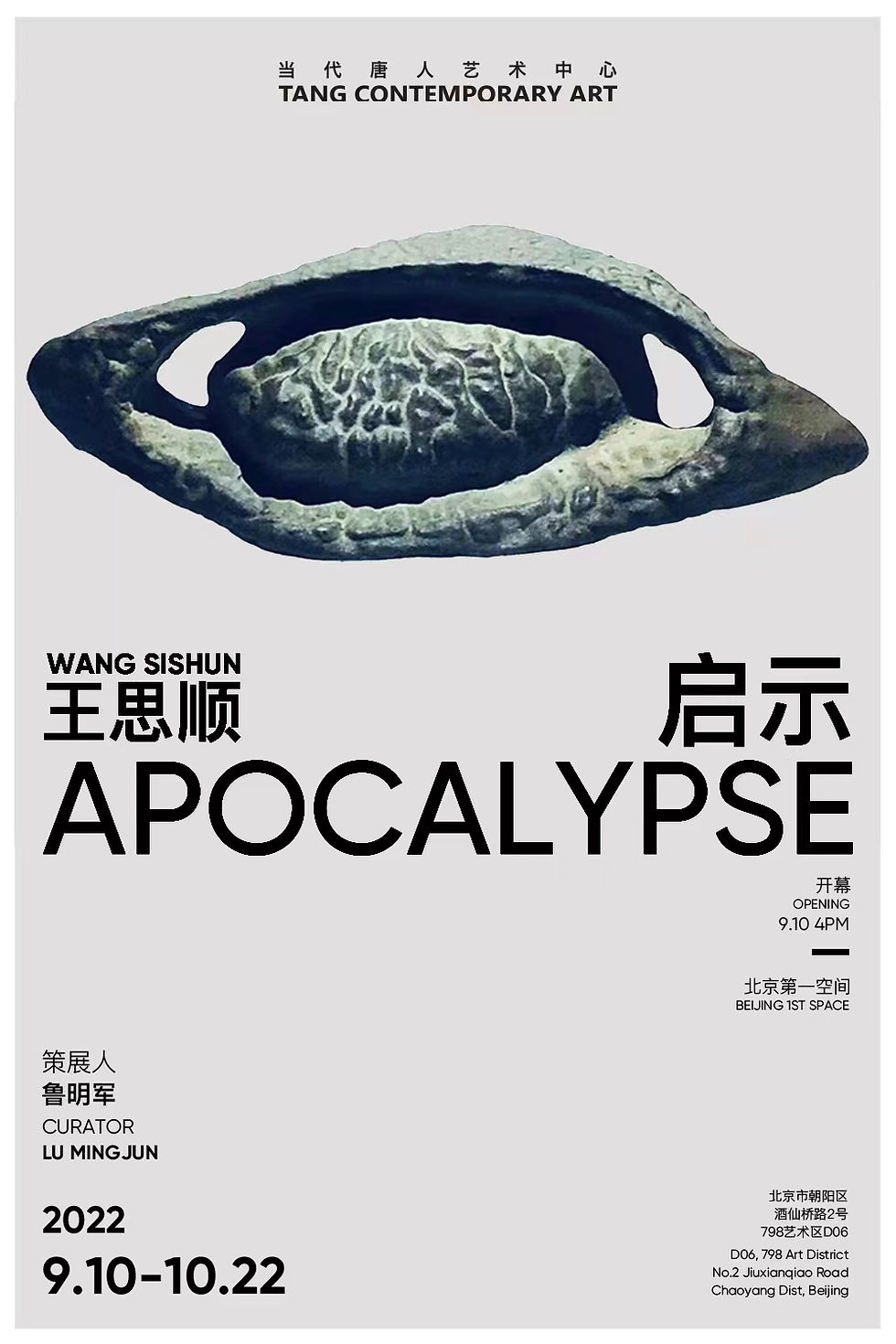Tang Contemporary Art is honored to represent Chinese artist Wang Sishun, whose solo exhibition "Apocalypse" will open on Sep. 10th at our Beijing 798 1st gallery space. The exhibition is curated by art critic Lu Mingjun and will showcase more than twenty sculpture works.
Wang Sishun: Apocalypse
Lu Mingjun
Wang Sishun has spent the last seven or eight years collecting stones from around the world (including Russia, France, Italy, Afghanistan, Uruguay, Egypt, China, etc.) that look like portraits or human faces. To date, he has collected thousands of portrait stones of all shapes and sizes, and for him, they are sculptures, but also part of his artistic practice.
The initial inspiration for this crazy idea came from a solo drive he made from Beijing to Paris in 2015. While on the road, he passed through several countries on the Eurasian continent and encountered people from many ethnicities. One day, he noticed strange stones of different types and was surprised to discover that they looked like people; they seemed to have their own attributes, personalities, and fates. In that moment, these primeval objects were like a divine revelation that immediately brought him back to life. Since then, Wang has thrown all of his energy into this project. “Apocalypse,” the first solo show for this body of work, was held at Long March Space in 2016. Six years later, Tang Contemporary Art is presenting the second solo exhibition for this project — also named “Apocalypse,” because the transcendent power is eternal.
We cannot ascertain when these stones from all over the world were formed, and we have no way of knowing how they have changed with the shifts in climate, geography, and culture that have taken place over billions of years. For Wang Sishun, these wonderful stones are the products of the will of nature, rather than miracles. In the late nineteenth century, primitive art and its unrefined qualities were discovered and widely incorporated by modern artists. In the twentieth century, this became a trend that deeply influenced a huge number of European and American artists. In particular, when Jean-Hubert Martin curated “Magiciens de la Terre” at the Centre Pompidou in 1989, primitive or indigenous art gained a new profile and became a new political force, due to the end of the Cold War and the advent of globalization. Of course, all of this has benefitted from the inventions of “prehistory” in the late nineteenth century. As art historian Maria Stavrinaki has written, in a time of technological progress, increased production, and accelerated movement, three narratives about time formed in the West. One after another, these new research areas delved deep into the hazy vastness of the past: First, they estimated the age of the Earth, then they traced the emergence of humans, and finally, they considered when art began. These temporal narratives cannot be separated from the destructive forces of modernity. When Aby Warburg studied images of Pueblo lands, he keenly noted how modern technologies (such as electricity) had damaged the lives and belief systems of indigenous peoples.
In the end, all of this is still the product of modern society. The rationality of enlightenment evidently cannot encompass its complexity; it always develops within the complicated dialectical relationships between fast and slow, change and eternity, faith and doubt, progress and decline, rationality and insanity. However, for Wang, these stone portraits carved by natural forces and universal time have already transcended this dialectical logic. He is creating — or more precisely, participating in the creation of — an eternal super-species that is greater than humanity and all of the species on Earth.
 Apocalypse 18.11.21Copper 120 × 65 × 77 cm 2018 |  Apocalypse 19.12.26Copper 132 × 41 × 160 cm 2019 |  Apocalypse 18.10.1Aluminum 138 × 73 × 300 cm 2018 |
|---|
Artist

Wang Sishun
Wang Sishun was born in Wuhan in 1979, graduated from C.A.F.A in 2008, now living and working in Beijing. His work have been shown in Diriyah Biennale, Diriyah, Saudi Arabia; Asian Art Biennial,Taichung,Taiwan; Thailand Biennale, Krabi, Thailand; Echigo-Tsumari Art Triennale, Echigo-Tsumari, Japan; The Yinchuan Biennale, Yinchuan, China; Ural Biennale, Yekaterinburg, Russia; Asia Triennial Manchester, Manchester, United Kingdom. His works were exhibited in Foundation Salomon, Annecy, France; Georgian National Gallery, Tbilisi, Georgia; Cass Sculpture Foundation, Sussex, Britain; Kunsthaus Graz, Graz, Austria; Daimler Contemporary Berlin, Berlin, Germany; Borusan Contemporary, Istanbul, Turkey; Ullens Center for Contemporary Art, Beijing, China; National Art Museum of China, Beijing, China; Luigi Pecci Centre for Contemporary Art, Prato, Italy. He won the nomination of Huayu Youth Award in 2015 and ACC Grant in 2016.
Curator

Lu Mingjun
Lu Mingjun, Young Researcher at the School of Philosophy, Fudan University, curator.
Recent curated exhibitions include “Frontier: Re-assessment of Post-Globalisation Politics” (2017- 2018), “Assembling” (2018), “River flowing without a Beacon, 1979” (2019) , “Corner Square Montage” (2019), and “Muses, Yu Gong and Compasses” (2020). His academic essays are published in “Literature & Art Studies” and “Art Research”. Recent publications include “Social Changes in the Painting Theory of Huang Binhong 1907-1954 (2018)” and “Poetic Justice” (2019). Lu was also the grantee of the Robert H. N. Ho Family Foundation Greater China Research Grant in 2015; and the recipient of the Yishu Award for Writing on Contemporary Chinese Art in 2016. He received a fellowship grant from Asia Cultural Council (ACC) and was the recipient of the 6th Chinese Contemporary Art Critic Award (CCAA) in 2017. He was the Recipient of the Award of Art (AAC) Chinese Contemporary Art Curator Award.



